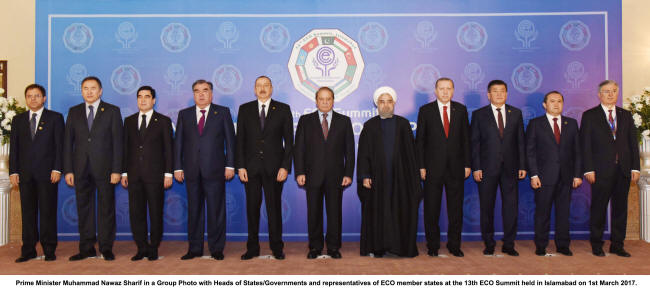
13th Economic Cooperation Organization Summit was held on 1st of March in Pakistan under “Connectivity for Regional Prosperity” theme. The theme summarizes overall aim and the potential of the organization and member countries. Due to geographic locations of the member countries, ECO region covers a large area from Central Asia to Black Sea region and has the potential to reach out to Europe via Turkey. Therefore, the region has been under the focus of many new projects, initiatives and actors aiming to promote cooperation via supporting the works on regional connectivity.
Economic Cooperation Organization (ECO) is a regional organization established for stronger cooperation and deeper regional integration in 1985 with the joint efforts of Turkey, Pakistan, and Iran. The ECO is the successor of the Regional Cooperation for Development that was established in 1964, but with the revolution in Iran it was no longer functional. However, in 1985, three countries realized the importance of regional integrations and established a similar organization with the same vision. Right after the collapse of the Soviet Union, seven new members joined the ECO in 1992. Currently, the organization has ten members: Turkey, Iran, Pakistan, Azerbaijan, Kazakhstan, Uzbekistan, Turkmenistan, Kyrgyzstan, Kazakhstan, Tajikistan, and Afghanistan. Nowadays, the ECO region is located along the borders between Europe and China.
There are seven directories working under ECO: 1) Trade and Investment; 2) Transport and Telecommunications; 3) Energy, Minerals and Environment; 4) Agriculture, Industry and Tourism; 5) Human Resources & Sustainable Development; 6) Project & Economic Research and Statistics and 7) International Relations. The ECO’s activities cover transportation, energy, cultural ties, environment, security related issues like fight against drug trafficking and economic relations among the members. In the long run, the organization aims to reduce the barriers towards a single market economy via supporting works on harmonization of the tariffs and regulations, necessary infrastructure and building transportation routes. In that sense, the Economic Cooperation Organization Trade Agreement (ECOTA), which was signed in 2003 and put into force in 2008, has upmost importance.
The main aim of the ECO is to actualize the potential of the region by achieving strong regional cooperation. According to the ECO Report titled “ECO Fifteen Years of Cooperation and Development 2000-2015” published in 2017, the total population of the ECO region is around 450 million, amounting to 6.23% of the world’s population, while the region’s GDP is around $1.8 million, which equals to 7.79% of the world’s total GDP. Also, the Foreign Direct Investment inflows in ECO region increased 10 times since 2000 and reached $37.7 billion in 2015. We observe an increase in the economic welfare of the member countries, which is not necessarily related with the establishment of regional institutions. However, such platforms encourage member countries to strengthen cooperation and pool resources to be used for projects, which are beneficial for all countries. At the same time, member countries are opening their markets to the international investors and the ECO region has thus become more attractive for investment in the last decade.
Firstly, transportation is one of the areas to be focused to underline the importance of the ECO. Within the framework of the joint projects, the ECO provides a platform for member countries that are already involved in regional infrastructural initiatives. Regional efforts made by the ECO members on improving trade and transportation through implementation of infrastructural project such as the North-South Transport Corridor, the Trans-Caspian Transportation Route, the China-Pakistan Economic Corridor, Chabahar and Gwadar ports complement each other. All these projects have the potential to function better in parallel with the wider and more comprehensive initiative, namely, China’s One Belt One Road (OBOR). Considering the geographical positions of the ECO member countries, it is possible to say that the success of the Silk Road-like projects depends on their desire for cooperation and integration. In that sense, the ground was already established three decades ago. Since 7 out of 10 ECO members are landlocked, so, it is vital for these countries to develop and enhance mutual cooperation in the fields of transportation and communications. Therefore, integration with the international community might be easier via regional mechanisms, sub-regional formations, and adaptability. Hence, in such a context, the ECO may gain momentum in the upcoming years.
Secondly, energy resources and energy transportation corridors will be one of the pillars of the ECO in the future. Some of the ECO members such as Azerbaijan, Kazakhstan, Iran, Turkmenistan, and Uzbekistan, have rich energy resources. Since the Ukrainian crisis and the instability in the Middle East highlighted the importance of energy security, the European Union member countries have become more interested in seeking ways to diversify their energy resources, especially, searching to alleviate their high- dependency to Russia. Therefore, five energy-rich ECO member countries together with oil and natural gas transportation corridors passing through Central Asia – South Caucasus – Europe via Turkey are getting more attention.
Thirdly, even though there are political disagreements among the ECO members such as the policies towards Syria, they could manage to establish strong cultural ties providing the ground for second-track diplomacy. Considering the common history and people-to-people interaction within the region, the social dimension that contributes to the integration is on the agenda of the ECO members.
It is important to follow the latest ECO Summits in the light of abovementioned regional developments. The previous ECO Summit was held in Azerbaijan in 2012. It took five years after the 12th Summit, the longest break in the ECO’s history, to organize the 13th Economic Cooperation Summit on March 1, 2017. In 2017 after Iran handed over the presidency to Pakistan Islamabad held the latest ECO Summit under the theme “Connectivity for Regional Prosperity” as declared by Pakistan’s Foreign Secretary, Aizaz Chaudhry. The day before the Summit, the Council of Foreign Minister’s Meeting (COM) was also held on 28th February 2017. Not surprisingly, both meetings focused on connectivity, trade, transport, and energy in addition to current situation in Afghanistan. At the end of the Summit, the ECO members adopted the Islamabad Declaration and Vision 2025 that targets promoting efforts for regional integration and serves as a guideline for the organization for the next 10 years.
However, there are some challenges that the ECO should overcome. For example, Russia’s influence in the region should not be underestimated. Russia is one of the major powers but it is not an ECO member. Since Kazakhstan and Kyrgyzstan are also the members of Russia-led Eurasia Economic Union (EEU) it might be difficult or almost impossible to adjust the tariffs and regulations with both of the organizations at the same time. Therefore, there is a necessity for the ECO and the EEU to find a way to merge technical requirements with mechanisms like free trade zone agreements, which would allow both organizations to gain from a win-win position.
In conclusion, it is possible to say that the ECO members recognize the need to focus on the real potential of the ECO region and to strengthen the integration processes in order to increase national welfare. Additionally, the ECO region is becoming increasingly important for outside powers and projects covering Eurasia overall. The fact that China and Russia sent observers to ECO Summit which was held this year in Islamabad clearly shows that both countries are following the developments in the ECO region very closely.
The original and shorter version of this article was published in Eurasian Research Institute, e-bulletin on 15 March 2017.
Link: http://eurasian-research.org/en/research/publication/e-bulletin/economic-cooperation-organization-current-situation-and-prospects
© 2009-2025 Avrasya İncelemeleri Merkezi (AVİM) Tüm Hakları Saklıdır
Henüz Yorum Yapılmamış.
-
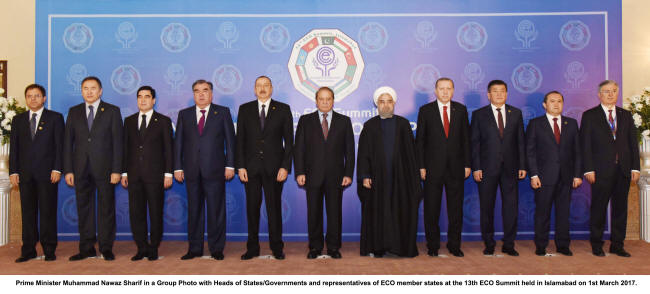 EKONOMİK İŞBİRLİĞİ TEŞKİLATI: MEVCUT DURUM VE BEKLENTİLER
EKONOMİK İŞBİRLİĞİ TEŞKİLATI: MEVCUT DURUM VE BEKLENTİLER
Özge Nur ÖĞÜTCÜ 15.03.2017 -
 TURKEY'S POLICIES ON INDEPENDENT TURKIC STATES
TURKEY'S POLICIES ON INDEPENDENT TURKIC STATES
Özge Nur ÖĞÜTCÜ 04.08.2017 -
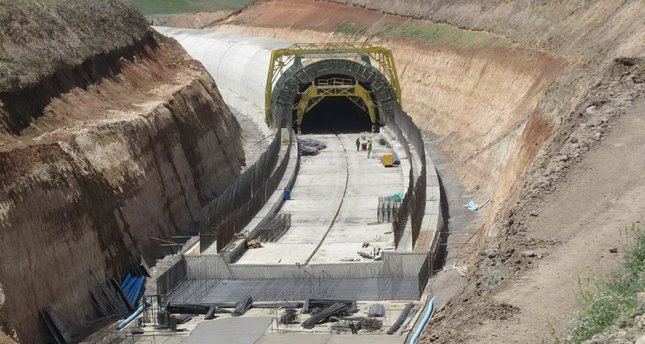 BAKU-TBILISI-KARS RAILWAY AND REGIONAL CONNECTIVITY
BAKU-TBILISI-KARS RAILWAY AND REGIONAL CONNECTIVITY
Özge Nur ÖĞÜTCÜ 20.02.2017 -
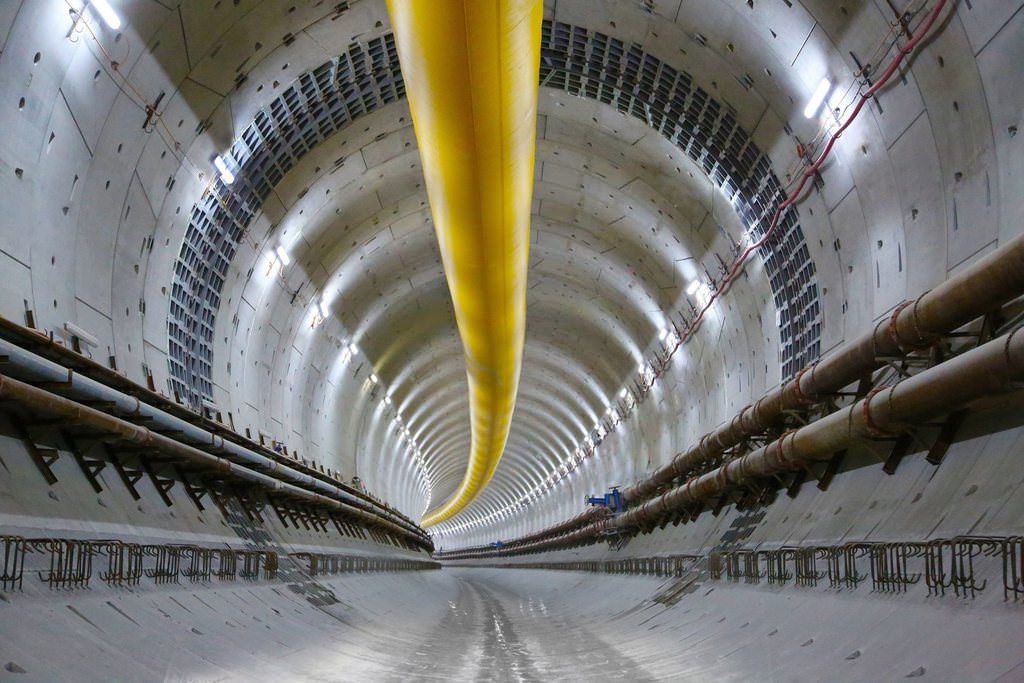 AVRASYA ULAŞIM KORİDORLARI VE TÜRKİYE
AVRASYA ULAŞIM KORİDORLARI VE TÜRKİYE
Özge Nur ÖĞÜTCÜ 18.01.2017 -
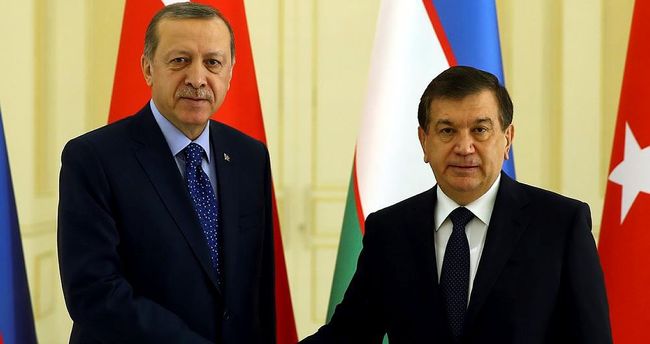 T.C. CUMHURBAŞKANI RECEP TAYYİP ERDOĞAN'IN ÖZBEKİSTAN ZİYARETİ
T.C. CUMHURBAŞKANI RECEP TAYYİP ERDOĞAN'IN ÖZBEKİSTAN ZİYARETİ
Özge Nur ÖĞÜTCÜ 21.11.2016
-
 ALMANYA’NIN AMACI NE? - TÜRKİYE GAZETESİ - 05.06.2016
ALMANYA’NIN AMACI NE? - TÜRKİYE GAZETESİ - 05.06.2016
Prof. Dr. Çağrı ERHAN 30.06.2016 -
 ENHANCING TÜRKİYE'S CRISIS MANAGEMENT: A STRATEGIC INTEGRATION OF MILITARY AND CIVILIAN CAPABILITIES
ENHANCING TÜRKİYE'S CRISIS MANAGEMENT: A STRATEGIC INTEGRATION OF MILITARY AND CIVILIAN CAPABILITIES
Ali Oğuz Diriöz - Teoman Ertuğrul Tulun 16.09.2024 -
BALKANLAR’DAKİ VAHABİLİK BİR TEHDİT Mİ? Dr. Erhan TÜRBEDAR
- 03.11.2011 -
 THE NILE WATER RESOURCES AND THE NEW DELTA PROJECT - 07.11.2023
THE NILE WATER RESOURCES AND THE NEW DELTA PROJECT - 07.11.2023
Deniz ÜNVER 07.11.2023 -
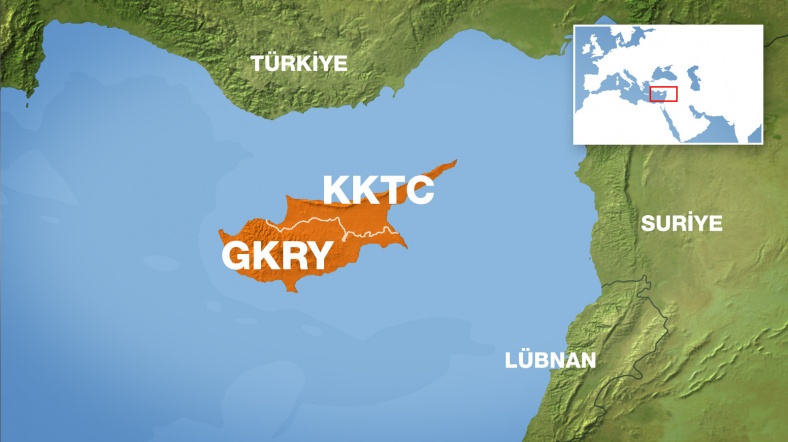 KIBRIS SORUNU İÇİN DOĞAL ÇÖZÜM - 18.02.2021
KIBRIS SORUNU İÇİN DOĞAL ÇÖZÜM - 18.02.2021
Tugay ULUÇEVİK 19.02.2021


